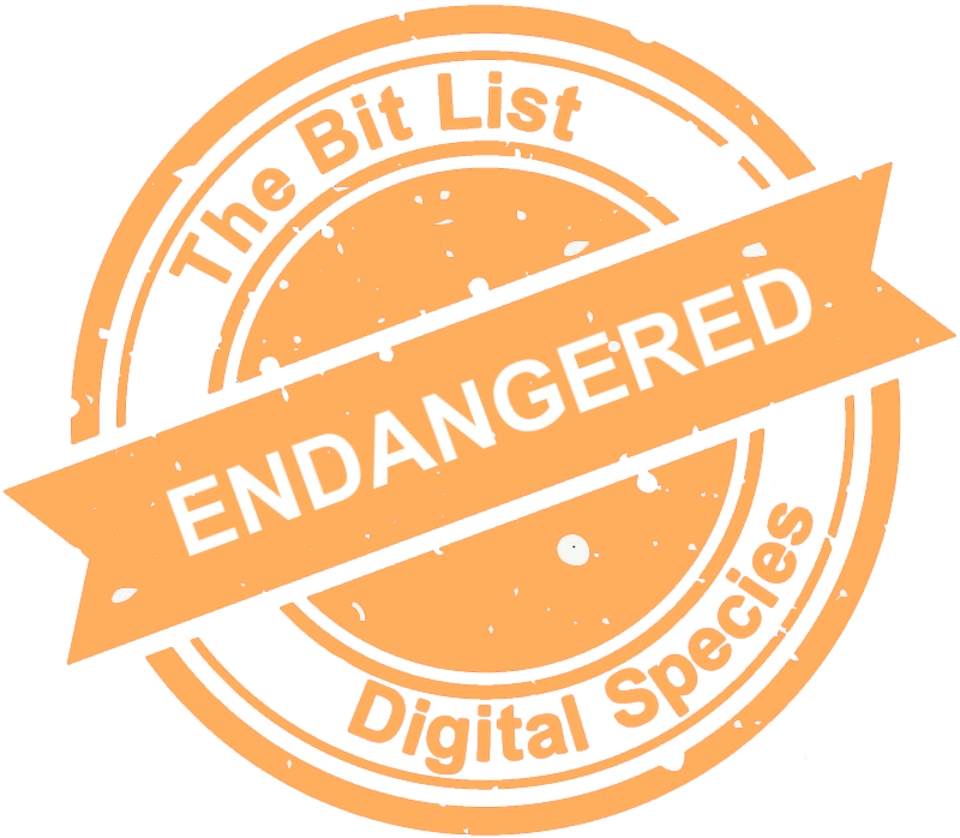Current Portable Magnetic Media
 |
||
|
Materials saved to magnetic tape, portable hard disks or other magnetic media in the last five years where the reader devices are still supported and can be integrated easily into hardware infrastructure. |
||
|
Digital Species: Portable Media |
Trend in 2022:
|
Consensus Decision |
|
Added to List: 2019 |
Trend in 2023:
|
Previously: Endangered |
|
Imminence of Action Action is recommended within three years, detailed assessment within one year. |
Significance of Loss The loss of tools, data or services within this group would impact on people and sectors around the world. |
Effort to Preserve | Inevitability It would require a small effort to preserve materials in this group, requiring the application of proven tools and techniques. |
|
Examples LTO tapes; portable hard disks. |
||
|
‘Critically Endangered’ in the Presence of Aggravating Conditions Poor storage conditions; encryption; digital rights management; uncertainty over IPR or the presence of orphaned works; lack of replication; lack of documentation; lack of periodic testing; lack of refreshment pathway; lack of access to readers; out of manufacturer warranty or no warranty; storage within paper files. |
||
|
‘Vulnerable’ in the Presence of Good Practice Regular review and testing; replication; refreshment plan; comprehensive documentation; high quality storage; regular maintenance of readers; multiple readers available. |
||
|
2023 Review This entry was added in 2019 to ensure that the range of media storage is properly assessed and presented. The 2019 Jury noted magnetic media is typically more fragile than optical media because it is susceptible to ‘bitrot’ and magnetic damage in ways that optical media are not. The 2021 Jury commented on how the types of magnetic media used had improved the last five years, notably the use of LTO, increasing good practice and therefore identified a 2021 trend towards reduced risk in this respect. They added it is important to note that LTO tapes come in different generations. Some pose greater preservation risks now (e.g., an organization with no equipment or way of reading content), so the use of LTO is good practice so long as it includes the active management of associated risks. The 2022 Taskforce agreed the risks remained on the same basis as before (no change to trend). The 2023 Council agreed with the risk classification of Endangered with the overall risks remaining on the same basis as before (‘No change’ to trend). |
||
|
Additional Comments This entry is highly dependent on who is looking after the portable media but made more difficult over time. The lack of granularity in the definition means that only general advice can be offered, such as to refresh media. In time, it may yet be more useful to split all storage media (maybe 100 items long) with an indication of how long these can be expected to last. In many cases, specialists can recover obsolete media, but the cost of employing them can become an aggravating condition. It is important to emphasize that the short lifetime of many storage devices is not a problem to be solved with new long-lasting storage technologies (and indeed, many inventions have come and gone). Cheap commodity storage has been purposely designed to deliver value at a low price for a short time. Therefore, management and preservation processes for monitoring and refreshment need to take these characteristics into account. |
||





































































































































